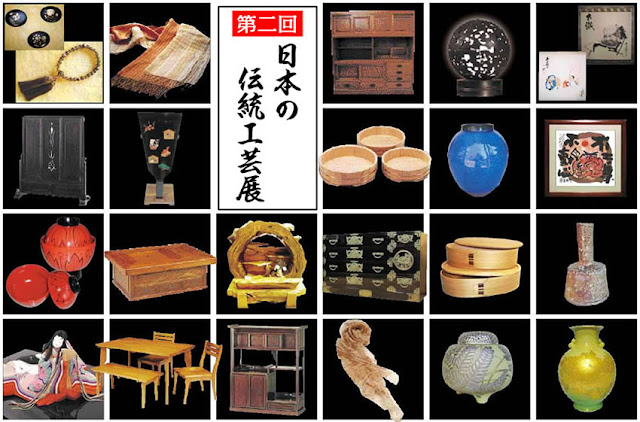The diversity of Japanese traditional crafts
Japanese Traditional crafts are products made using techniques that have been handed down from generation to generation. They are mainly used for daily necessities, and their techniques can be said to be the origin of Japanese craftsmanship. Among these, products that meet the following five criteria set by the Minister of Economy, Trade and Industry are certified by the government as “traditional crafts”.
- The product is used in daily life.
- Main parts of the manufacturing process is handmade.
- Items that are manufactured using traditional techniques or skills.
- Traditionally used raw materials are used as main raw materials.
- A certain region in which a significant number of people are engaged in its production and it forms a local industry.
By 2020, approximately 230 traditional crafts will be designated as “traditional crafts” and will exist throughout Japan. Looking at the number of such items by prefecture, Tokyo leads the list with 18 items. Kyoto Prefecture is next, followed by Tochigi, Fukushima, Shimane, Ibaraki, Shiga, Tokyo, Yamagata, Kagawa, and Mie Prefectures. The number of companies engaged in traditional crafts is approximately 25,000, with about 140,000 employees and a production value of about 800 billion yen.
 |
| Source: Yanoman |
Each prefecture has own unique traditional crafts
There are 48 prefectures in Japan, and each of them has its own traditional crafts. Crafts have developed in accordance with local characteristics and lifestyles and have their own unique characteristics. On the other hand, traditional crafts have grown up in similar places with similar characteristics, even if the prefectures have not been in contact with each other since ancient times and are far apart. This is a very valuable perspective, because it is evidence that the Japanese people lived quite similar lifestyles in different regions.
Traditional crafts that make full use of indigenous raw materials and techniques are a very important cultural insight into the history of a region. At the same time, these crafts have developed as daily necessities, as indicated by their standards. The reason why there are still so many traditional crafts in Japan today is precisely because they are daily necessities. In other words, they are not just old-fashioned handicrafts, but products that are still being purchased and used today.
 |
| Source: PIXABAY |
By Prefectures
In this article, we will introduce a list of Japanese traditional crafts in each prefecture of Japan. And please check the links for detailed explanations.
Hokkaido Region
Hokkaido: Nibutani Ita, Nibutani bark cloth
Tohoku Region
Aomori: Tugaru-nuri, Tsugaru Glassware,Nambu Weaving, Kokeshi, Pottery
Iwate: Nambu Ironware, Iwayado traditionalchest, Hidehira-nuri
Miyagi : Miyagi kokeshi doll, SendaiTansu(chest)
Akita: Kawatsura Lacquerware, Akita Cedar Oke
Yamagata: Yamagata cast iron, Tendo Shogi(Japanese chess) pieces, Buddhist Altar
Fukushima: Aizu-nuri, Ohori Soma-yakipottery, Aizu Hongo Pottery
Kanto Region
Ibaraki: Yuuki Tsumugi, Kasama-yaki (ware)
Tochigi: Mashiko ware, Nikko carving
Gunma
Saitama: Chichibu Meisen, Kasukabe paulownia chest, Gyoda Tabi & Iwatsuki dolls
Chiba: Boshu Uchiwa, Chiba Koshugu(Cutlery)
Tokyo
Kanagawa: Kamakura-bori lacquerware, Odawara lacquerware, Hakone wood mosaic
Hokuriku Region
Niigata
Toyama
Ishikawa
Fukui
Chubu Region
Yamanashi
Nagano
Gifu
Shizuoka
Aichi
Mie
Kansai Region
Shiga
Kyoto
Osaka
Hyogo
Nara
Wakayama
Chugoku Region
Tottori
Shimane
Okayama
Hiroshima
Yamaguchi
Shikoku Region
Tokushima
Kagawa
Ehime
Kochi
Kyushu/Okinawa Region
Fukuoka
Saga
Nagasaki
Kumamoto
Oita
Miyazaki
Kagoshima
Okinawa
Enjoy Japanese traditions
Japanese traditional crafts are classified not only by the place of production, but also by the type of product. We are planning to make another ranking of popularity by product group when we have a chance. For Japanese people, using traditional crafts on a daily basis is not something special. There are many inexpensive products that are sold at ordinary tableware stores and markets, and many people may have been using them without knowing it. It is a culture that has permeated daily life to such an extent that many people are unaware of its existence.
Because of this, it is easy to compile sales and popularity rankings, and several organizations involved in traditional culture publish such rankings every year. In our blog, we will not only post the rankings, but also add explanations and reputations for each of the traditional crafts that made the list. Please look forward to it.








